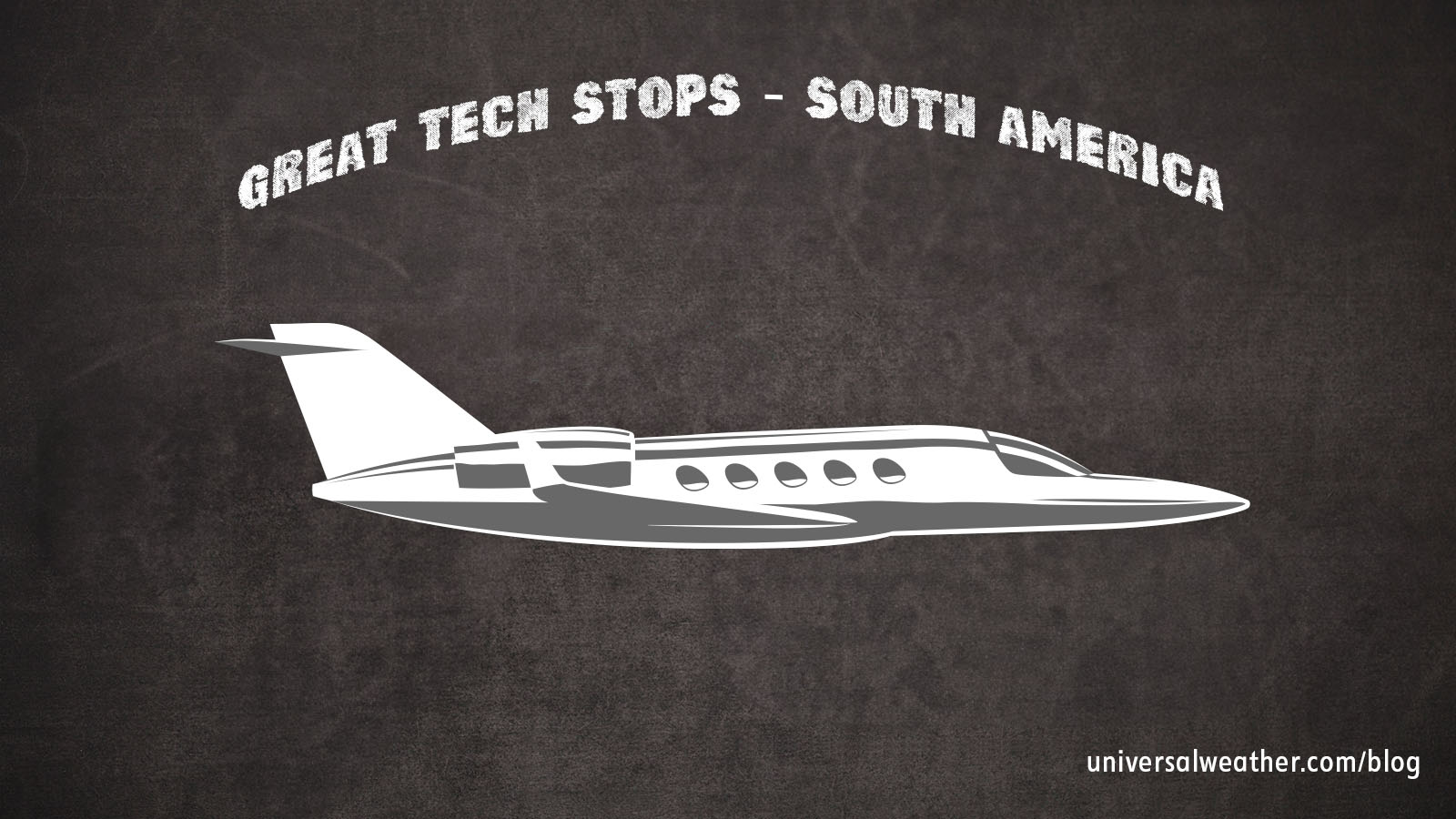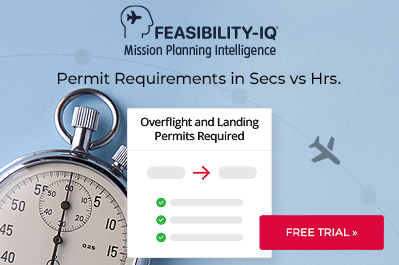5 Great Tech Stops in the South American Region for Business Aviation – and Why


This business aviation blog post is part of a series on great technical stops for business aviation.
Tech-stop choices depend, of course, upon your itinerary and great circle routing. However, for business-aviation operators, there are plenty of 24-hour, fast, and efficient tech-stop options within the South American region. While jet-fuel availability is not a problem and jet-fuel pricing is similar across the continent, it’s important to consider landing-permit notification requirements, airport hours, credit, and service availability when selecting tech stops.
1. What are 5 recommended locations for tech stops?
Depending on where you are operating, there may be many good locations for tech stops. These are the 5 we recommend.
The 5 recommended locations are:
- ✈ Manta, Ecuador (SEMT)
- ✈ Guayaquil, Ecuador (SEGU)
- ✈ Lima, Peru (SPIM)
- ✈ Recife, Brazil (SBRF)
- ✈ Manaus, Brazil (SBEG)
Explanation:
Some of the best tech stops in the South American region include: Manta, Ecuador (SEMT), Guayaquil, Ecuador (SEGU), Lima, Peru (SPIM), Recife, Brazil (SBRF), and Manaus, Brazil (SBEG). The criteria used were 24-hour airports with quick turns, full service availability and credit-arrangement capabilities. On the other hand, the following airports are great but we don’t recommend as tech stops: Cayenne, French Guiana (SOCA), Bogota, Colombia (SKBO), Cartagena, Colombia (SKCG), and Georgetown, Guyana (SYCJ), due to longer processes required to arrange ground handling and landing permits. Caracas, Venezuela (SVMI) is actually a very good tech stop, with quick turns and no landing permits required for tech stops only. You run the risk, however, of not being able to depart should you encounter a mechanical or some other type of problem, as Venezuelan Civil Aviation Authority (CAA) requires a landing permit for all operations into and out of the country, with the exception of tech stops.
2. What are some of the advantages of these 5 locations?
SEMT is an efficient, uncongested, 24-hour airport located between Chile and the U.S. West Coast. SEGU and SPIM, likewise, will give you a very quick turn with full support services. SBRF is close to the South Atlantic track between Brazil and Africa, and provide full service and quick tech stops. Also, SBEG is a great tech stop for transiting through the eastern region of South America.
3. What is turnaround time for jet fuel uplifts at these 5 locations?
Depending on the size of the aircraft, the turn time is typically 45 – 60 minutes.
4. Are operators required to clear customs or have visas for these 5 international tech stops?
In most cases, you will not clear customs for international tech stops at these locations. Check with your 3rd-party provider on any particular rules that may apply to your flight or onboard foreign nationals that might require visas.
5. Are airport slots, prior permissions required (PPRs), landing permits or advance notification required at these 5 locations?
While airport slots and PPRs are not required, landing permits are necessary for tech stops. Required deadlines to request for landing permits vary by country. Official requirements are 96 hours’ notice for Ecuador landing permits, 48 hours for Peru and 48 hours for Brazil. Operators can usually obtain landing permits within 24 hours if the application is made early in the day, all documentation is sent in advance, and the appropriate CAA approves the request (as it’s at CAA’s discretion to approve the permit when within the permit-request lead time).
6. Can all services be arranged on credit at these 5 locations?
All services can be provided through prior credit arrangements. Aviation fuel cards and credit cards are accepted at all locations for jet fuel payment. Please check with your 3rd-party provider for a list of aviation fuel cards accepted. Without an aviation fuel card or prior jet fuel arrangements via fuel release, you may be paying the posted jet fuel price. It’s always recommended to carry a fuel release confirmation when operating in South America. Always read the fuel ticket carefully before signing. Verify that the correct card is being used, and confirm that you’re not receiving the wrong jet fuel price.
7. Are there any potential problems operators should be aware of at these 5 locations?
Jet-fuel services may be an issue when planning your operations, so plan and reconfirm well in advance. While jet fuel uplift cost is similar throughout the region, be aware of jet-fuel taxes for domestic legs within Brazil which can almost double the cost of jet fuel. If you tech stop in Northern Brazil, and continue to a final destination in the Southern part of the country, you’ll be looking at a much higher cost jet fuel uplift at your tech stop.
Conclusion
When planning tech stops, it’s important to consider the overall picture above and beyond what we have discussed in this article: great circle routing, airport hours, runways, service availability, potential airport congestion or closed runways, and jet fuel price. Landing permit lead time is a consideration within the South American region, and there may be flight crew visa and vaccination requirements. If you tech stop in Brazil, for example, and continue on to South Africa, you could be required to show evidence of yellow fever vaccinations at your destination. It’s always best to orchestrate all tech-stop logistics and potential issues in advance with your 3rd-party provider.
Questions?
If you have any questions about this article, contact Christine Vamvakas at christinevamvakas@univ-wea.com.
Later, we’ll discuss great technical stops for business aviation in Australia and the Pacific Islands.




